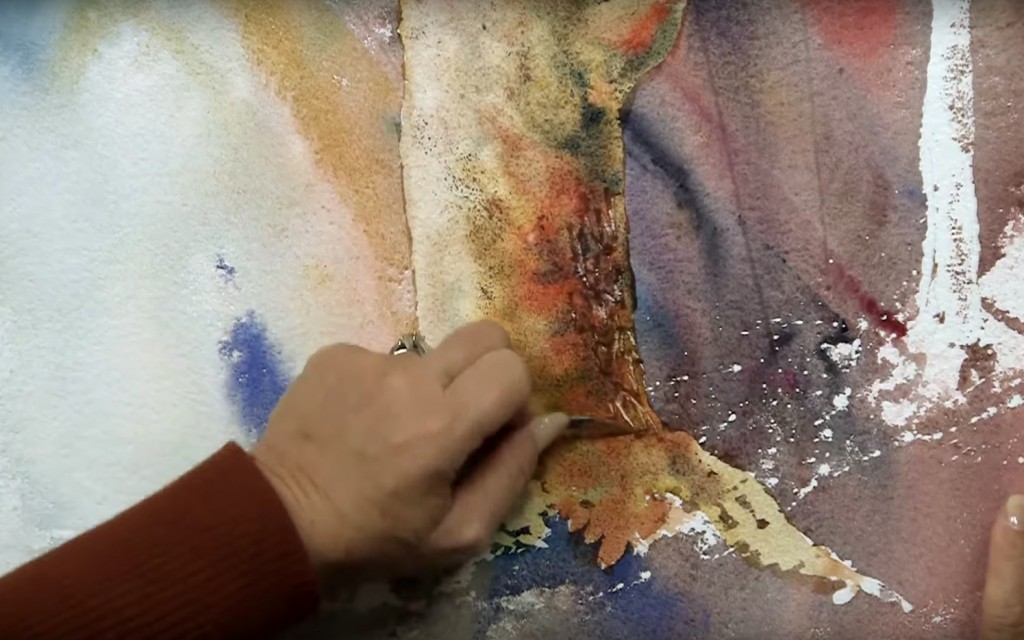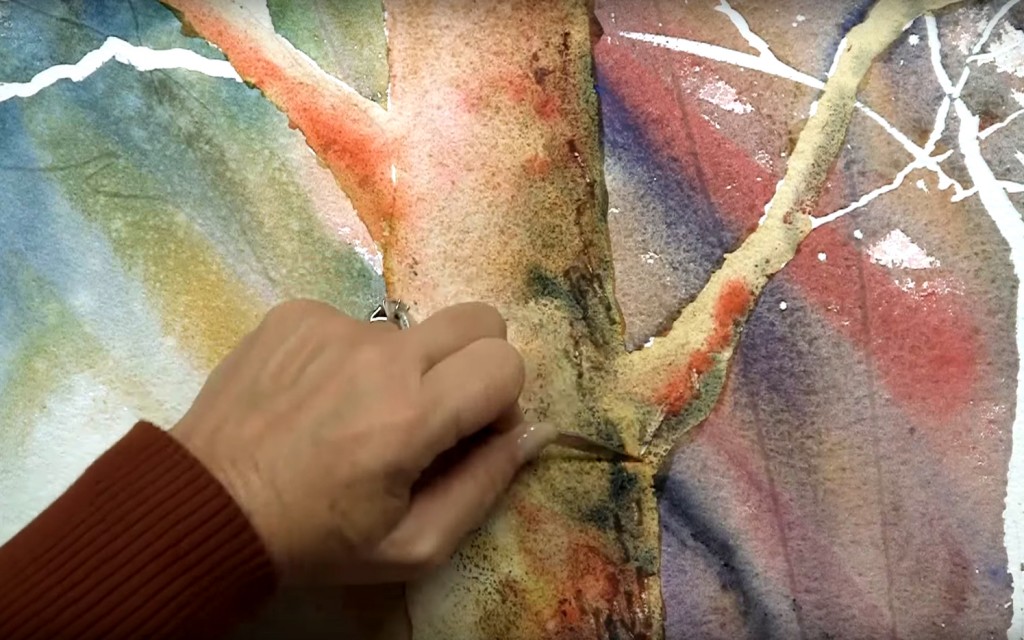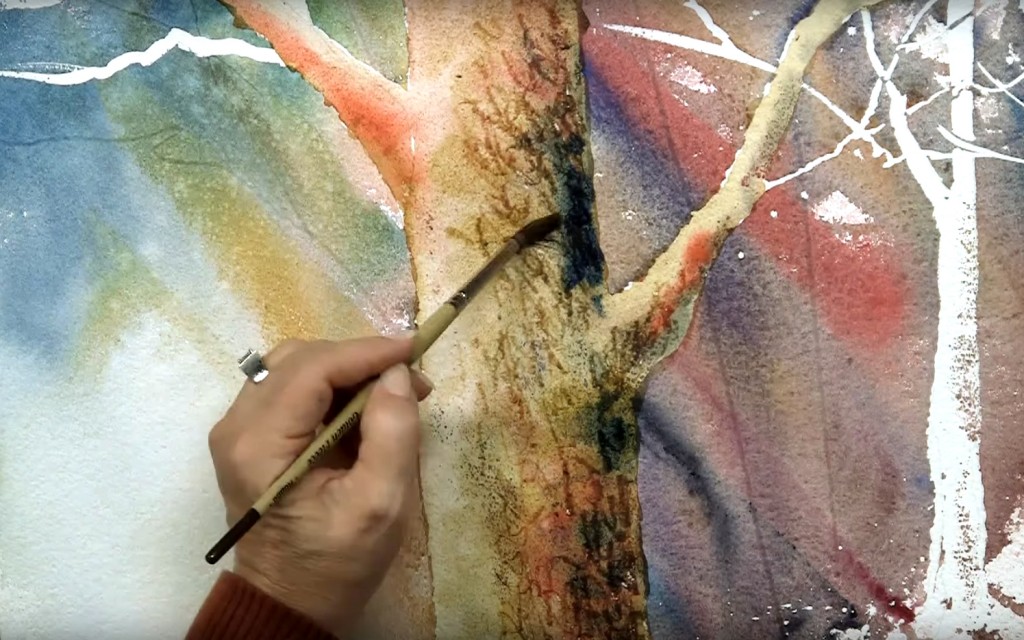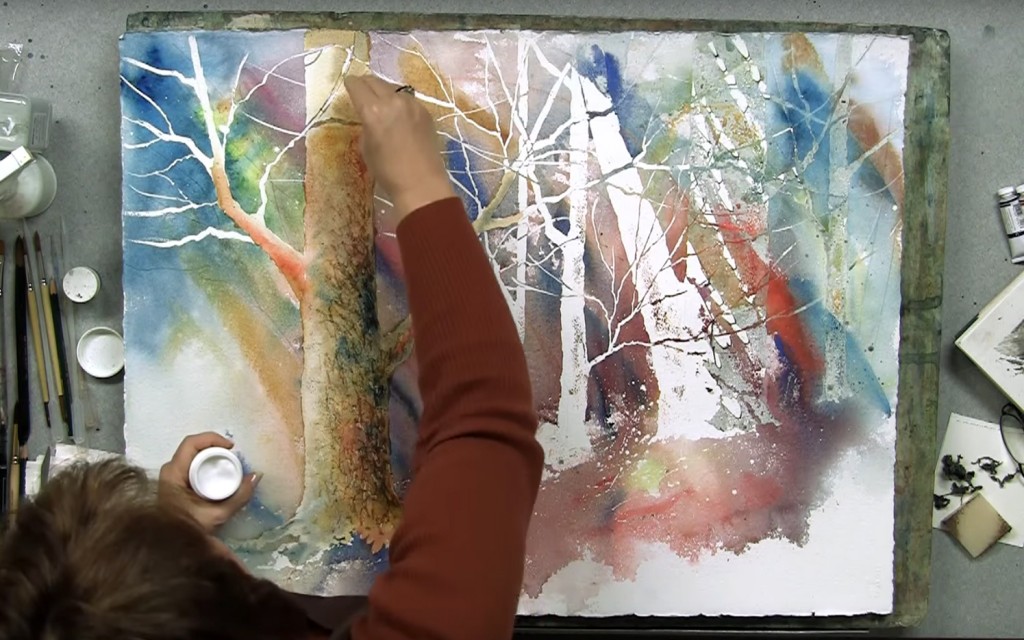Try a different and lesser known watercolor technique for adding a bark-like texture to trees in Linda Baker's tutorial. It involves sharp objects, so be careful!
Materials used for this watercolor technique:
- Reference picture of a tree or forest
- An almost complete painting of the reference picture on watercolor paper (the paint should still be wet)
- Painting palette with preferred watercolor paints
- Set of watercolor brushes (mainly round brushes, sizes 0-6)
- Two cups of water
- A towel or rag to dry off the brushes
- Pocket knife
- Table salt
Step 1:
 Finish painting the first layer of paint to the tree you want to add texture to, then immediately take a pocket knife and start scratching the bark texture into the tree. Hold the knife at a 45-60° angle to the paper and start scratching with the blade's tip, but be careful not to scratch too hard as the paper is more vulnerable to tearing when it's wet (this is referred to as a type of "scumbling" technique). Make jagged lines that follow a vertical path up the tree, and work fast to add to the randomness of the lines.
Finish painting the first layer of paint to the tree you want to add texture to, then immediately take a pocket knife and start scratching the bark texture into the tree. Hold the knife at a 45-60° angle to the paper and start scratching with the blade's tip, but be careful not to scratch too hard as the paper is more vulnerable to tearing when it's wet (this is referred to as a type of "scumbling" technique). Make jagged lines that follow a vertical path up the tree, and work fast to add to the randomness of the lines.
Step 2:
 In the video, Linda tends to avoid the highlighted parts of the tree and sticks to scratching the shadowed areas. She also avoids most of the areas where a branch meets the tree, so the branches won't look cut off from the main trunk. While you're scratching, you'll also notice that the scratches don't show up as much in wetter areas, and will show up more in dryer areas. You can use this knowledge to your advantage and control how prominent you want your texture to look.
In the video, Linda tends to avoid the highlighted parts of the tree and sticks to scratching the shadowed areas. She also avoids most of the areas where a branch meets the tree, so the branches won't look cut off from the main trunk. While you're scratching, you'll also notice that the scratches don't show up as much in wetter areas, and will show up more in dryer areas. You can use this knowledge to your advantage and control how prominent you want your texture to look.
Step 3:
 As the paint dries, you can add more paint on top so the texture doesn't appear too white. Scumble the paint on - that is, make sure the brush isn't very wet and lightly brush the paint on top. This adds a rougher-looking texture which is perfect for bark. You can alternate between scratching with the pocket knife and scumbling with the brush, thereby adding layers and depth to your tree.
As the paint dries, you can add more paint on top so the texture doesn't appear too white. Scumble the paint on - that is, make sure the brush isn't very wet and lightly brush the paint on top. This adds a rougher-looking texture which is perfect for bark. You can alternate between scratching with the pocket knife and scumbling with the brush, thereby adding layers and depth to your tree.
Step 4:
 You can even sprinkle salt on the surfaces where the paint has lost its sheen; i.e. where the surface is damp but not saturated with paint. This adds another layer of texture to your painting. Keep going until you're satisfied, but make sure not to overdo it. You can always experiment on a scrap piece of paper beforehand, and get the feel for the techniques and the different effects they can produce. Special thanks goes to Linda Baker for sharing this technique in her video tutorial below:
You can even sprinkle salt on the surfaces where the paint has lost its sheen; i.e. where the surface is damp but not saturated with paint. This adds another layer of texture to your painting. Keep going until you're satisfied, but make sure not to overdo it. You can always experiment on a scrap piece of paper beforehand, and get the feel for the techniques and the different effects they can produce. Special thanks goes to Linda Baker for sharing this technique in her video tutorial below:



